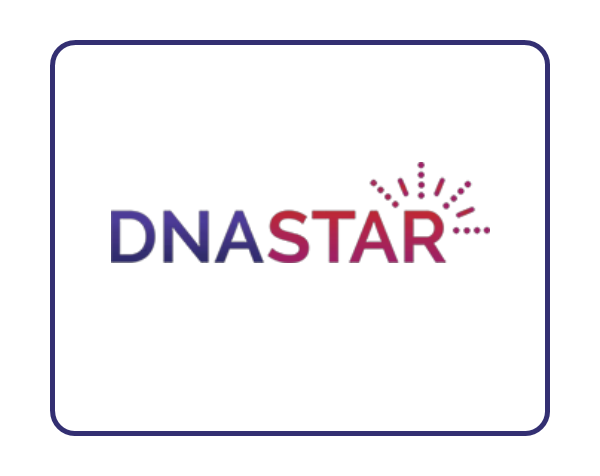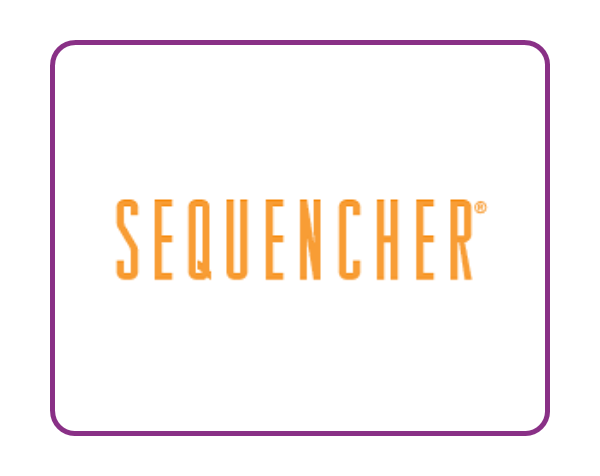SimGlycan - 糖基结构分析软件
SimGlycan是一款MSn数据分析软件。它预测聚糖结构,对其进行评分并生成与给定MS谱密切匹配的可能聚糖列表。支持糖肽和释放的聚糖谱。
SimGlycan根据MS/MS和多级质谱 (MSn ) 数据预测聚糖的结构。此外,使用LC-MS/MS糖肽数据分析糖肽的支持有助于糖基化研究。SimGlycan接受实验性MS/MS数据,将它们与自己的数据库进行匹配,结果生成排序的候选结构列表。每个候选者的等级表示候选结构和实验聚糖之间的接近度。排名是根据稳健的评分机制计算的,该机制考虑了在实验MS/MS光谱中观察到的结构特异性诊断离子以及观察到的峰的强度。
SimGlycan还支持异构体分化的多级质谱 (MSn ) 数据分析。
SimGlycan特点:
强的聚糖和糖肽数据库
SimGlycan数据库是一个大型关系数据库,包含9,964种聚糖、22,814种糖蛋白*、6,826种已知生物来源的聚糖和5,874种已知类别的聚糖。随着更多聚糖信息的发布,该数据库会不断更新。
支持MALDI MS/MS和LC-MS/MS工作流程
支持H、Li、Na、Mg2+、K、HCOO-和NH4+等不同的加合物以及Na+H、Li+H等加合物组合,以及基于不同的可扩展 MS/MS碎片模式仪器设置,SimGlycan可以分析糖肽和释放聚糖的MALDI和LC-MS/MS数据,这些聚糖是未衍生化、全甲基化和还原端修饰的,而不会影响分析结果。
数据输入文件格式
SimGlycan可以直接自动加载由SCIEX(TripleTOFTM 5600系统、TOF/TOF 5800、4800 Plus MALDI TOF/TOFTM分析仪、4000 QTRAP®和QSTAR®Elite系统)的质谱仪产生的输入数据文件。Agilent Technologies(Agilent 6200系列TOF LC/MS和Agilent 6500系列Q-TOF LC/MS系统),Bruker Corporation(ultrafleXtremeTM MALDI TOF/TOF, ultraflexTM MALDI TOF/TOF, autoflexTM TOF和TOF/TOF, maXisTM UHR-TOF, micrOTOFTM, micrOTOF-QTM, solariXTM Qq-FTMS和amaZonTM 离子阱系列),Thermo ScientificTM(LTQ FT Ultra、LTQ Velos、LTQ XL、LTQ Orbitrap Discovery、LTQ Orbitrap Velos、LTQ Orbitrap XL、MALDI LTQ Orbitrap、Orbitrap Elite, Q Exactive和Thermo ScientificTM OrbitrapTM FusionTM Tribrid质谱仪和Thermo ScientificTM Q ExactiveTM 混合四极杆-Orbitrap质谱仪)和Waters公司(SYNAPT G2 HDMS、SYNAPT G2 MS、Xevo G2 QTof、Xevo QTof MS、Xevo TQ MS和Xevo TQ-S平台)。使用mzData和mzXML格式支持其他质谱仪。此外,SimGlycan也接受手动输入、TXT和XLS文件格式。不管你的仪器是什么的,都可以用第三方工具将输出结果转换为这些格式。
TMT定量*
SimGlycan现在支持基于质谱的定量糖学工作流程,使用aminoxyTandem Mass Tags (TMT)。aminoxyTMT6试剂能够有效的对聚糖进行相对定量,提高标记聚糖的电离效率,从而提高分析通量。通过测量来自相应MS/MS光谱的报告离子峰强度来量化聚糖。用户可以指定小至0.0001的容差。提取峰强度后,调整氨氧基TMT报告离子信号以说明每种TMT变体中的同位素杂质。用户可以选择全部聚糖谱匹配中的总和/平均/中值报告离子强度作为聚糖的数量。各种图表,如条形图、点图等。
多级质谱(MSn)数据分析
SimGlycan包括对执行多级/序列质谱 (MSn ) 数据分析的支持。MSn是一种对来自MS/MS(或前级MS)的产物离子进行重碎裂的技术,是解决异质性、分支模式和同压寡糖结构的有效技术之一。它允许区分具有相似特征片段模式的聚糖,这些片段模式在MS/MS光谱中无法区分。随着MS (n)水平的增加,生成的片段变得具有结构特异性,这有助于解析同量异位寡糖或对选定结构进行详细表征。

糖肽定性分析
很多质谱仪允许在化合物从在线分离系统中洗脱时捕获MS/MS 数据。这种LC-MS/MS方法会生成很大的数据集,需要复杂的信息学工具在色谱分离过程中分配糖肽结构。这将提高分析效率并提供更深入的质谱糖蛋白组数据分析。SimGlycan现在支持识别复杂混合物的糖肽,这些混合物由LC分离并由MS/MS在批处理模式下检测。SimGlycan将使用第三方工具识别的蛋白质ID、蛋白质序列或肽序列作为初始输入。SimGlycan识别可能的聚糖-肽组合,并根据MS/MS数据中观察到的峰对它们进行排序,这些峰对应于理论糖肽中的诊断离子。可以分析具有1到20 ppm和0.1到2000 milli Dalton (mDa) 之间误差容限的高分辨率准确质量数据。
项目管理
SimGlycan提供项目管理,将结果与输入配置文件和搜索参数相关联。您可以打开任意数量的项目。用户可以在一个项目中导入20,000个光谱。项目可以根据来源、实验室或研究目标进行分类。这很关键,尤其是在进行大规模聚糖分析项目时。您可以通过单击按钮访问聚糖相关信息。与基于Web的应用程序不同,SimGlycan将其保存在您自己的计算机上。
可用信息包括:
聚糖结构:显示聚糖的分子结构(碳水化合物序列)。
Glycan Fragments:使用Domon Costello碎片规则显示命名法、结构、m/z值和质量。为每个片段分配一个序列号。
i) 糖苷片段:显示单个糖苷和糖苷/糖苷片段。
ii) 交叉环片段:显示单个交叉环和糖苷/交叉环片段。
糖肽结构:显示肽序列和蛋白质糖基化位点以及聚糖结构。
注释质谱并生成报告: SimGlycan可以使用cartoons或Domon-Costello命名法对质谱进行注释。还描绘了片段的电荷状态。
导出带注释的峰列表:用户可以将全部搜索结果的带注释的峰列表从20,000个MS/MS光谱导出到单个项目报告。用户可以在带注释的峰列表中只包含匹配的片段或同时包含匹配和不匹配的片段。
绘制聚糖
SimGlycan使用户能够绘制和编辑聚糖和糖肽结构。只需单击按钮,即可添加或删除单糖、肽链或HSO 3、Etn等取代基,并可修改分支点和异头连接。在每一步,绘制结构的碎片化使用户能够比较实验数据和理论数据,使用户能够查看他的修改是否使理论聚糖更接近实验数据。此功能很大地有助于解析糖链结构,尤其是当目标糖链的数据尚不可用时。

质谱解释
软件通过突出显示与理论碎片相匹配的实验m/z值来帮助解释质谱,并生成描述连续单糖单元损失的注释光谱。这有助于研究人员建立分支模式并验证聚糖的基本单元。每个峰都可以使用cartoons或Domon Costello命名法来表示。如果碎片是多电荷的,也会显示碎片的电荷状态。
SimGlycan能够生成带注释的质谱,以适合页面或基于感兴趣的区域。它还会将其导出以与您的同事分享发现。
简单的界面使您能够放大特定的绘图位置,指定m/z范围以显示特定的绘图部分,还可以将绘图作为图像文件导出到MS PowerPoint,以便发布结果并与同事共享信息。
Cartoons是使用标准的单糖功能糖组学(CFG)命名法构建的(在CFG注释不可用的情况下使用自定义符号)。您可以同时绘制全部类型的糖苷片段,同时以符号表示格式注释光谱。
*此功能在SimGlycan企业版中可用。
SimGlycan企业版
SimGlycan企业版现已推出。如果您使用的是私人定制数据库或专有数据,企业版是您正在寻找的解决新型聚糖的安全工具。您可以从数据库中添加或删除聚糖结构,或创建您自己的子数据库以缩小搜索范围,直接从您的工作站方便。多个聚糖的结构信息可以存储在一个文件中并添加到数据库中,从而节省时间。
系统要求:
| 对于Windows | 需要 | 推荐 |
| CPU | Intel Core i3 | i5 / i7 |
| 内存 | 12GB | 12GB或更高 |
| 硬盘空间 | 200GB | 500GB或更高 |
| 屏幕分辨率 | 1024×786 | >1024×768 |
Windows 支持的平台:Vista/Windows 7/Windows 8/Windows 10/Windows 11
【英文介绍】
SimGlycan is an innovative MSn data analysis software. It predicts the glycan structure, scores it & generates a list of probable glycans that closely match the given MS profile.
SimGlycan predicts structure of glycans from the MS/MS and multi-stage mass spectrometry (MSn) data. Furthermore, comprehensive support for resolving glycopeptides using LC-MS/MS glycopeptide data facilitates glycosylation studies. SimGlycan accepts experimental MS/MS data, matches them with its own database and finally generate a list of ranked candidate structures. Rank of each candidate indicates the proximity between the candidate structure and the experimental glycan. The rank is calculated based on a robust scoring mechanism that considers structure specific diagnostic ions observed in the experimental MS/MS spectra as well as the intensity of those observed peaks.
SimGlycan also supports multistage mass spectrometry (MSn) data analysis for isomers differentiation.
SimGlycan Features
Robust Glycan and Glycopeptide Database
SimGlycan database is a large relational database containing 9,964 glycans, 22,814 glycoproteins*, 6,826 glycans with known biological sources and 5,874 glycans with known classes. The database is continuously updated as information on additional glycans is published.
Support for MALDI MS/MS and LC-MS/MS Workflows
With comprehensive support for different adducts such as H, Li, Na, Mg2+, K, HCOO- and NH4+ and adduct combinations such as Na + H, Li + H etc. along with scalable MS/MS fragmentation patterns based on different instrument settings, SimGlycan can analyze MALDI – and LC- MS/MS data for glycopeptides and released glycans that are underivatized, permethylated and reducing end modified with no compromise on the results of the analysis.
Data Input File Formats
SimGlycan allows direct automatic loading of input data files generated by mass spectrometers from SCIEX (TripleTOFTM 5600 System, TOF/TOF 5800, 4800 Plus MALDI TOF/TOFTM Analyzer, 4000 QTRAP® and QSTAR® Elite Systems), Agilent Technologies (Agilent 6200 Series TOF LC/MS and Agilent 6500 Series Q-TOF LC/MS systems), Bruker Corporation (ultrafleXtremeTM MALDI TOF/TOF, ultraflexTM MALDI TOF/TOF, autoflexTM TOF and TOF/TOF, maXisTM UHR-TOF, micrOTOFTM, micrOTOF-QTM, solariXTM Qq-FTMS, and amaZonTM ion trap series), Thermo ScientificTM (LTQ FT Ultra, LTQ Velos, LTQ XL, LTQ Orbitrap Discovery, LTQ Orbitrap Velos, LTQ Orbitrap XL, MALDI LTQ Orbitrap, Orbitrap Elite, Q Exactive and Thermo ScientificTM OrbitrapTM FusionTM Tribrid mass spectrometer and Thermo ScientificTM Q ExactiveTM hybrid quadrupole-Orbitrap mass spectrometer) and Waters Corporation (SYNAPT G2 HDMS, SYNAPT G2 MS, Xevo G2 QTof, Xevo QTof MS, Xevo TQ MS and Xevo TQ-S platforms). Other mass spectrometers are supported using mzData and mzXML formats. Besides, manual entry, TXT and XLS file formats are also accepted by SimGlycan. No matter what make your instrument is, the output can be converted to these formats using third party tools.
TMT Quantitation*
SimGlycan now supports the Mass Spectrometry-based quantitative glycomics workflow using aminoxyTandem Mass Tags (TMT). aminoxyTMT6 reagents enable efficient relative quantitation of glycans, improving labeled-glycan ionization efficiency thereby increasing analytical throughput. Glycans are quantified by measuring reporter ion peak intensities from the corresponding MS/MS spectra. User can specify a tolerance as small as 0.0001. Following extraction of peak intensities, the aminoxyTMT reporter ion signals are adjusted to account for isotopic impurities in each TMT variant. Users can select the sum/average/median reporter ion intensities across all glycan-spectral matches as the quantity of a glycan. Various charts such as bar chart, dot-plot etc. are plotted to facilitate visualization of the quantity of each glycan in different TMT channels and across biological samples.
Multi Stage Mass Spectrometry (MSn) Data Analysis
SimGlycan includes comprehensive support to perform Multi Stage/Sequential Mass Spectrometry (MSn) data analysis. MSn, a technique wherein the product ions from MS/MS (or previous stage MS) are subjected to refragmentation, is one of the most effective techniques in resolving heterogeneity, branching pattern and isobaric oligosaccharide structures. It allows discrimination of glycans having similar characteristic fragment patterns which are otherwise indistinguishable in MS/MS spectra. As the level of MS (n) increases, generated fragments become structure specific which assists in resolving isobaric oligosaccharides or detailed characterization of selected structures.
Glycopeptide Qualitative Analysis
Many of the mass spectrometers allows the capture of MS/MS data as compounds elute from in line separation systems. Such LC-MS/MS approaches generate extremely large datasets, requiring sophisticated informatics tool to assign glycopeptide structures over a complete chromatographic separation. This would enhance analytic productivity and provide greater depth of analysis of mass spectrometric glycoproteomic data. SimGlycan now includes comprehensive support for identifying glycopeptides of complex mixtures separated by LC and detected by MS/MS in batch processing mode. The Protein ID, Protein sequence or Peptide sequences identified by using a third party tool will be used by SimGlycan as initial input. SimGlycan identifies probable glycan-peptide combinations and ranks them on the basis of observed peaks in the MS/MS data corresponding to diagnostic ions from theoretical glycopeptide. High resolution accurate mass data with an error tolerance between 1 to 20 parts per million (ppm) and 0.1 to 2000 milli Dalton (mDa) can be analyzed.
Project Management
SimGlycan provides a comprehensive project management, associating results with input profile and search parameters. You can open any number of projects. Users can import 20,000 spectra in a project. The projects can be classified on the basis of the source, the lab or the research goal. This is important, especially when conducting large-scale glycan analysis projects. You can access glycan related information at the click of a button. Unlike web based applications, SimGlycan saves it on your own computer.
The available information consists of:
Glycan Structure: Displays the molecular structure (carbohydrate sequence) of the glycan.
Glycan Fragments: Displays the nomenclature, structure, m/z value and mass using Domon Costello rules of fragmentation. A serial number is assigned to each fragment.
i) Glycosidic Fragments: Single glycosidic and glycosidic/glycosidic fragments are displayed.
ii) Cross Ring Fragments: Single cross ring and glycosidic/cross ring fragments are displayed.
Glycopeptide Structure: Displays the peptide sequence and the sites of protein glycosylation along with the glycan structures.
Annotate Mass Spectra and Generate Reports: SimGlycan can annotate mass spectra using cartoons or Domon-Costello nomenclature. The charge state of the fragment is also depicted.
Export Annotated Peaklist Table: Users can export annotated peaklist for all search results from 20,000 MS/MS spectra to single project report. Users can include either only the matched fragments or both matched and unmatched fragments in the annotated peaklist table.
Draw Glycans
SimGlycan enables users to draw and edit glycan and glycopeptide structures. A monosaccharide, peptide chain or a substituent such as HSO3, Etn can be added or deleted and branching points and anomeric linkages can be modified at the click of a button. At each step, the fragmentation of the drawn structure enables a user to compare the experimental and theoretical data, enabling the user to see whether his modification brings the theoretical glycan closer to the experimental data. This feature greatly assists in resolving glycan structures, especially when data for glycans of interest is not yet available.
Mass Spectra Interpretation
Software helps in interpreting a mass spectra by highlighting the experimental m/z values that match those of theoretical fragments and generates an annotated spectrum depicting the loss of consecutive monosaccharide units. This helps researcher to establish the branching pattern and verifying the basic unit of glycan. Each peak can be represented using cartoons or Domon Costello nomenclature. Charge states of fragments are also displayed if the fragments are multiply charged.
SimGlycan enables generating an annotated mass spectra either to fit on a page or based on the area of interest. It also exports it for sharing the findings with your colleagues.
The simple interface enables you to zoom into specific plot locations, specify m/z range to display specific plot sections and also to export plots as image files to MS PowerPoint, for publishing results and sharing information with colleagues.
Cartoons are constructed using standard Consortium for Functional Glycomics (CFG) nomenclature for monosaccharides (custom symbols are used where CFG annotations are not available). You can simultaneously plot all types of glycosidic fragments while annotating the spectra in symbolic representation format.
*This feature is available in the SimGlycan Enterprise Edition.
- 2025-12-29
- 2025-12-18
- 2025-12-17
- 2025-12-15
- 2025-12-12
- 2025-12-12
- 2025-12-30
- 2025-12-25
- 2025-12-19
- 2025-12-16
- 2025-12-10
- 2025-12-09


















